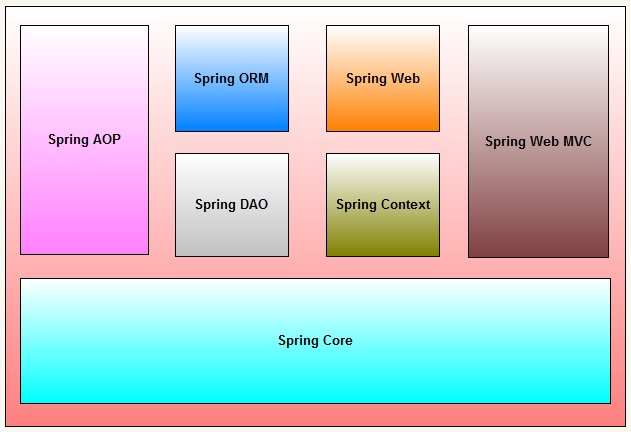Now that, we already know how to inject the properties of a Bean using <property=" " value=""> its time to call the constructor and inject the values to constructor argument using spring framework.
Construtor argument injection for single parameter :
Consider a simple bean as follows :
class Employee
{
int empId;
Employee(int empId)
{
this.empId=empId;
}
}
In above class the Employee bean consist of a property empId, which we are initializing by using constructor.Spring uses the constructor injection concept to call the parameterized constructor of Employee through configuration file as follows :
The above configuration file will call the single argument constructor in Employee bean and inject the value 101 into the constructor !!!!
But life is not so simple always :
Consider the following example :
Solution
Construtor argument injection for single parameter :
Consider a simple bean as follows :
class Employee
{
int empId;
Employee(int empId)
{
this.empId=empId;
}
}
In above class the Employee bean consist of a property empId, which we are initializing by using constructor.Spring uses the constructor injection concept to call the parameterized constructor of Employee through configuration file as follows :
<?xml version="1.0" encoding="UTF-8"?>
<beans xmlns="http://www.springframework.org/schema/beans"
xmlns:xsi="http://www.w3.org/2001/XMLSchema-instance"
xsi:schemaLocation="http://www.springframework.org/schema/beans
http://www.springframework.org/schema/beans/spring-beans.xsd">
<bean id="emp1"
class="Employee">
<constructor-arg value="101" />
</bean>
</beans>
The above configuration file will call the single argument constructor in Employee bean and inject the value 101 into the constructor !!!!
But life is not so simple always :
Consider the following example :
public class Employee
{
private String name;
private String address;
private int age;
public Employee(String name, String address, int age) {
this.name = name;
this.address = address;
this.age = age;
}
public Employee(String name, int age, String address) {
this.name = name;
this.age = age;
this.address = address;
}
//getter and setter methods
public String toString(){
return " name : " +name + "\n address : "
+ address + "\n age : " + age;
}
}<!--Spring-Customer.xml-->
<beans xmlns="http://www.springframework.org/schema/beans"
xmlns:xsi="http://www.w3.org/2001/XMLSchema-instance"
xsi:schemaLocation="http://www.springframework.org/schema/beans
http://www.springframework.org/schema/beans/spring-beans-2.5.xsd">
<bean id="EmployeeBean" class="Employee">
<constructor-arg>
<value>Amit</value>
</constructor-arg>
<constructor-arg>
<value>188</value>
</constructor-arg>
<constructor-arg>
<value>28</value>
</constructor-arg>
</bean>
</beans>Employee emp = (Employee)context.getBean("EmployeeBean");
System.out.println(emp); name : Amit
address : 28
age : 188Solution
To resolve this we need to always make sure that we sepcify the data types for the argument in the configuration file like :
Markup
<beans xmlns="http://www.springframework.org/schema/beans"
xmlns:xsi="http://www.w3.org/2001/XMLSchema-instance"
xsi:schemaLocation="http://www.springframework.org/schema/beans
http://www.springframework.org/schema/beans/spring-beans-2.5.xsd">
<bean id="EmployeeBean" class="Employee">
<constructor-arg type="java.lang.String">
<value>Amit</value>
</constructor-arg>
<constructor-arg type="java.lang.String">
<value>188</value>
</constructor-arg>
<constructor-arg type="int">
<value>28</value>
</constructor-arg>
</bean>
</beans>
Run it again, now you get what you expected.
Output
name : Amit address : 188 age : 28


